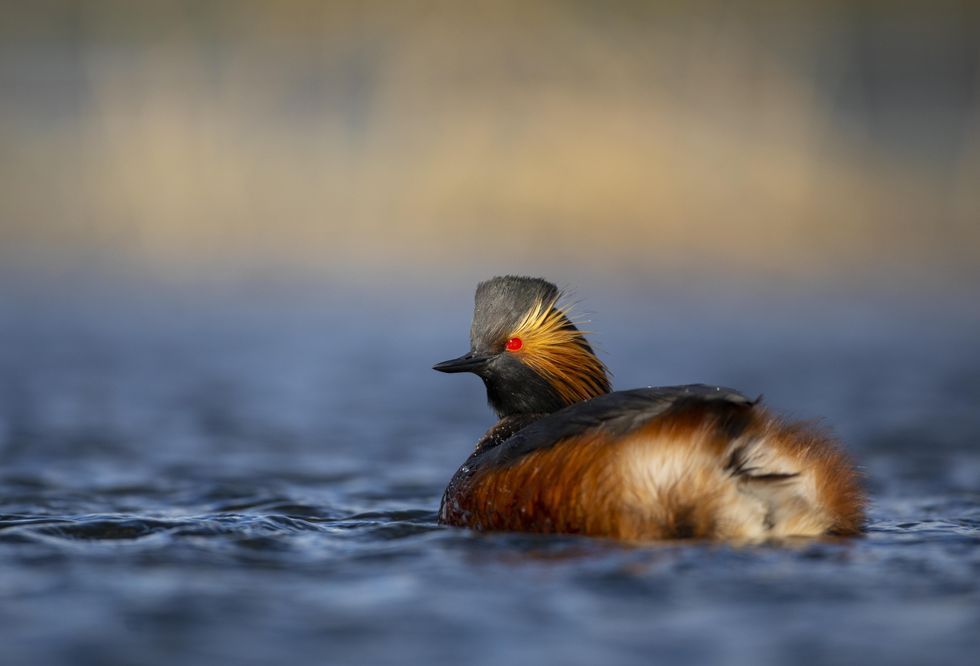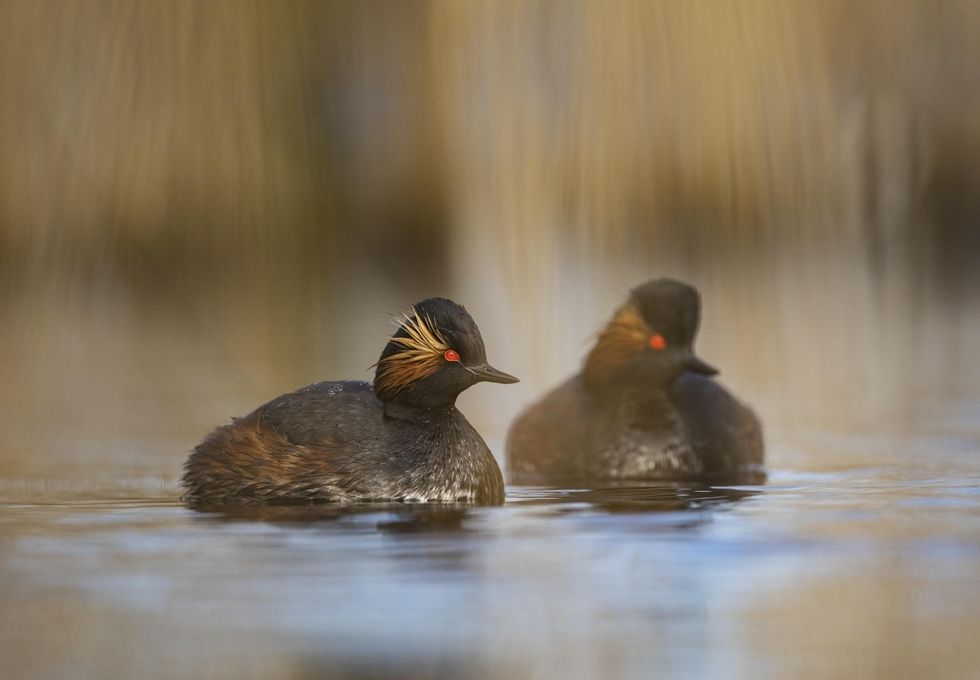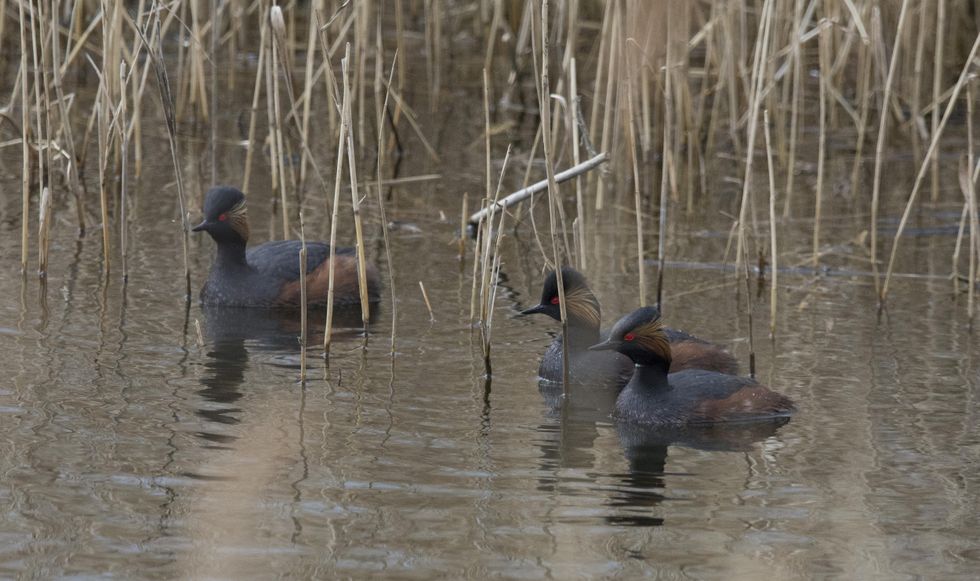
Conservationists are celebrating a record year for a rare and vulnerable breeding bird species in the UK.
The Royal Society for the Protection of Birds (RSPB) said the black-necked grebe saw a surge in the number of breeding pairs in 2023.
It comes after a series of dedicated conservation efforts to provide and restore vital wetland habitats at RSPB nature reserves that can support the water birds, which have tufts of golden feathers and red eyes.
Black-necked grebes are on the UK’s Birds of Conservation Concern’s “amber” list, meaning there is moderate concern for the species among conservationists.
This time of year marks the species’ breeding season when they start to perform a courtship dance.
This involves the male and female swimming in tandem, mirroring each other’s movements, wagging heads and culminating in a “penguin dance” where they rise up out of the water breast to breast.

If the efforts to woo a mate are successful, the birds then build floating nests among reeds.
The rise in breeding numbers has been particularly prevalent at RSPB’s St Aidan’s Nature Park, near Leeds, in West Yorkshire, which celebrated a record year for black-necked grebes in 2023.
Habitat work was undertaken by conservationists at the nature reserve, including a team of volunteers, to carefully manage water levels and create new areas of shallow water and dense reeds within which the birds can perform their dance, feed and nest.
The record 18 breeding pairs that were counted also fledged the joint second-highest count of chicks of 12 in total, bringing hopes that fledgeling numbers will increase in future.
The reserve is now home to around 30% of the UK breeding population, the RSPB said.
John Ingham, warden at RSPB St Aidan’s, said: “Black-necked grebes aren’t just one of the rarest breeding birds in the UK – they are also one of the most beautiful.
“Unmistakable with that piercing red eye and golden ear tufts, at a distance, they may be quite unassuming with their diminutive size, but up close they are simply stunning.
“Based on the successful breeding season last year and mild winter, we would hope for good numbers of black-necked grebe again this spring at RSPB St Aidan’s.”
But Mr Ingham also warned that the birds face many challenges such as loss of wetland habitats, extreme weather events caused by climate change, declines in small fish and invertebrates they rely on for feeding, predation and potentially, increased incidences of diseases such as avian influenza.

“These threats make our work to maintain the perfect habitat conditions for wildlife like black-necked grebes all the more important, especially if we are to enjoy the arrival of these beautiful birds at RSPB nature reserves for many years to come,” he said.
The RSPB said the birds are likely to continue to arrive at its nature reserves throughout March, and numbers are expected to peak in mid-April before they disappear into the reeds to nest.
The organisation has asked visitors to stick to paths to avoid disturbing the rare birds, especially during the breeding season.
The birds can be found throughout North America, Europe and Asia but the UK is right on the edge of the black-necked grebe’s breeding range, so the population in Britain is very small.
Over the last five years, the UK population has averaged around 54 pairs.
During winter, the birds hunker down in wetlands, large reservoirs and coastal areas, but spring marks their annual return to nature reserves across the UK to breed.













